-
EXECUTIVE SUMMARY
-
Market Overview
-
Key Findings
-
Market Segmentation
-
Competitive Landscape
-
Challenges and Opportunities
-
1.6.
-
Future Outlook
-
MARKET INTRODUCTION
-
2.1.
-
Definition
-
Scope of the study
- Research Objective
- Limitations
-
2.2.2.
-
Assumption
-
\r\n
-
RESEARCH METHODOLOGY
-
Overview
-
Data Mining
-
Secondary Research
-
Primary Research
- Primary Interviews and Information Gathering
- Breakdown of Primary Respondents
-
Process
-
Forecasting Model
-
Market Size Estimation
- Bottom-Up Approach
- Top-Down
-
Approach
-
Data Triangulation
-
Validation
-
4.
-
MARKET DYNAMICS
-
Overview
-
Drivers
-
Restraints
-
Opportunities
-
MARKET FACTOR ANALYSIS
-
Value chain
-
Analysis
-
Porter's Five Forces Analysis
- Bargaining Power
- Bargaining Power of Buyers
- Threat of New
- Threat of Substitutes
- Intensity of Rivalry
-
of Suppliers
-
Entrants
-
COVID-19 Impact Analysis
- Market Impact Analysis
- Opportunity and Threat Analysis
-
5.3.2.
-
Regional Impact
-
ANTIFOG ADDITIVES MARKET, BY APPLICATION (USD BILLION)
-
Automotive
-
Safety Glasses
-
Sports Gear
-
Building and Construction
-
Food Packaging
-
ANTIFOG ADDITIVES MARKET, BY TYPE (USD BILLION)
-
Polyethylene Glycol
-
Surfactants
-
Organic Additives
-
Inorganic Additives
-
ANTIFOG ADDITIVES MARKET, BY FUNCTIONALITY
-
(USD BILLION)
-
Clear Visibility
-
Surface Protection
-
8.3.
-
Anti-Static Properties
-
Hydrophobic Properties
-
ANTIFOG ADDITIVES
-
MARKET, BY END USE (USD BILLION)
-
Industrial
-
Residential
-
Commercial
-
ANTIFOG ADDITIVES MARKET, BY REGIONAL (USD BILLION)
-
North America
- US
- Canada
-
Europe
- Germany
- UK
- France
- Russia
- Italy
- Spain
- Rest of Europe
- China
- India
- Japan
- South
- Malaysia
- Thailand
- Indonesia
- Rest of APAC
-
10.3.
-
APAC
-
Korea
-
South America
- Brazil
- Argentina
- Rest of South America
-
10.4.2.
-
Mexico
-
MEA
- GCC Countries
- South Africa
- Rest of MEA
-
COMPETITIVE LANDSCAPE
-
Overview
-
11.2.
-
Competitive Analysis
-
Market share Analysis
-
Major Growth
-
Strategy in the Antifog Additives Market
-
Competitive Benchmarking
-
Leading Players in Terms of Number of Developments in the Antifog Additives
-
Market
-
Key developments and growth strategies
- New Product
- Merger & Acquisitions
-
Launch/Service Deployment
-
11.7.3.
-
Joint Ventures
-
Major Players Financial Matrix
- Sales and
- Major Players R&D Expenditure. 2023
-
Operating Income
-
12.
-
COMPANY PROFILES
-
Solvay
- Financial Overview
- Key Developments
- SWOT Analysis
- Key Strategies
-
12.1.2.
-
Products Offered
-
Mitsubishi Chemical Corporation
- Products Offered
- Key Developments
- SWOT Analysis
- Key Strategies
-
12.2.1.
-
Financial Overview
-
Huntsman Corporation
- Financial Overview
- Products Offered
- Key
- SWOT Analysis
- Key Strategies
- Financial Overview
- Products Offered
- SWOT Analysis
- Key Strategies
- Financial Overview
- Products Offered
- Key Developments
- SWOT Analysis
- Key Strategies
-
Developments
-
12.4.
-
SABIC
-
12.4.3.
-
Key Developments
-
12.5.
-
Dai Nippon Toryo
-
Avery Dennison
- Financial Overview
- Products
- Key Developments
- SWOT Analysis
-
Offered
-
12.6.5.
-
Key Strategies
-
Momentive Performance Materials
- Financial
- Products Offered
- Key Developments
- Key Strategies
-
Overview
-
12.7.4.
-
SWOT Analysis
-
Kraton Corporation
- Products Offered
- Key Developments
- SWOT Analysis
- Key Strategies
-
12.8.1.
-
Financial Overview
-
Eastman Chemical
- Financial Overview
- Products Offered
- SWOT Analysis
- Key Strategies
- Financial Overview
- Products Offered
- Key Developments
- SWOT Analysis
- Key
-
Company
-
12.9.3.
-
Key Developments
-
12.10.
-
Croda International
-
Strategies
-
BASF
- Financial Overview
- Products
- Key Developments
- SWOT Analysis
-
Offered
-
12.11.5.
-
Key Strategies
-
Chemours
- Financial Overview
- Key Developments
- SWOT Analysis
- Key Strategies
-
12.12.2.
-
Products Offered
-
Clariant
- Financial Overview
- Products Offered
- Key Developments
- SWOT
- Key Strategies
-
Analysis
-
3M
- Financial
- Products Offered
- Key Developments
- Key Strategies
-
Overview
-
12.14.4.
-
SWOT Analysis
-
Evonik Industries
- Products Offered
- Key Developments
- SWOT Analysis
- Key Strategies
-
12.15.1.
-
Financial Overview
-
APPENDIX
-
References
-
Related Reports
-
LIST OF TABLES
-
TABLE
-
LIST OF ASSUMPTIONS
-
NORTH AMERICA ANTIFOG ADDITIVES MARKET SIZE
-
ESTIMATES & FORECAST, BY APPLICATION, 2019-2035 (USD BILLIONS)
-
TABLE 3.
-
NORTH AMERICA ANTIFOG ADDITIVES MARKET SIZE ESTIMATES & FORECAST, BY TYPE, 2019-2035
-
(USD BILLIONS)
-
NORTH AMERICA ANTIFOG ADDITIVES MARKET SIZE ESTIMATES
-
& FORECAST, BY FUNCTIONALITY, 2019-2035 (USD BILLIONS)
-
NORTH
-
AMERICA ANTIFOG ADDITIVES MARKET SIZE ESTIMATES & FORECAST, BY END USE, 2019-2035
-
(USD BILLIONS)
-
NORTH AMERICA ANTIFOG ADDITIVES MARKET SIZE ESTIMATES
-
& FORECAST, BY REGIONAL, 2019-2035 (USD BILLIONS)
-
US ANTIFOG
-
ADDITIVES MARKET SIZE ESTIMATES & FORECAST, BY APPLICATION, 2019-2035 (USD BILLIONS)
-
US ANTIFOG ADDITIVES MARKET SIZE ESTIMATES & FORECAST, BY TYPE,
-
US ANTIFOG ADDITIVES MARKET SIZE ESTIMATES
-
& FORECAST, BY FUNCTIONALITY, 2019-2035 (USD BILLIONS)
-
US ANTIFOG
-
ADDITIVES MARKET SIZE ESTIMATES & FORECAST, BY END USE, 2019-2035 (USD BILLIONS)
-
US ANTIFOG ADDITIVES MARKET SIZE ESTIMATES & FORECAST, BY REGIONAL,
-
CANADA ANTIFOG ADDITIVES MARKET SIZE ESTIMATES
-
& FORECAST, BY APPLICATION, 2019-2035 (USD BILLIONS)
-
CANADA
-
ANTIFOG ADDITIVES MARKET SIZE ESTIMATES & FORECAST, BY TYPE, 2019-2035 (USD
-
BILLIONS)
-
CANADA ANTIFOG ADDITIVES MARKET SIZE ESTIMATES & FORECAST,
-
BY FUNCTIONALITY, 2019-2035 (USD BILLIONS)
-
CANADA ANTIFOG ADDITIVES
-
MARKET SIZE ESTIMATES & FORECAST, BY END USE, 2019-2035 (USD BILLIONS)
-
TABLE
-
CANADA ANTIFOG ADDITIVES MARKET SIZE ESTIMATES & FORECAST, BY REGIONAL,
-
EUROPE ANTIFOG ADDITIVES MARKET SIZE ESTIMATES
-
& FORECAST, BY APPLICATION, 2019-2035 (USD BILLIONS)
-
EUROPE
-
ANTIFOG ADDITIVES MARKET SIZE ESTIMATES & FORECAST, BY TYPE, 2019-2035 (USD
-
BILLIONS)
-
EUROPE ANTIFOG ADDITIVES MARKET SIZE ESTIMATES & FORECAST,
-
BY FUNCTIONALITY, 2019-2035 (USD BILLIONS)
-
EUROPE ANTIFOG ADDITIVES
-
MARKET SIZE ESTIMATES & FORECAST, BY END USE, 2019-2035 (USD BILLIONS)
-
TABLE
-
EUROPE ANTIFOG ADDITIVES MARKET SIZE ESTIMATES & FORECAST, BY REGIONAL,
-
GERMANY ANTIFOG ADDITIVES MARKET SIZE ESTIMATES
-
& FORECAST, BY APPLICATION, 2019-2035 (USD BILLIONS)
-
GERMANY
-
ANTIFOG ADDITIVES MARKET SIZE ESTIMATES & FORECAST, BY TYPE, 2019-2035 (USD
-
BILLIONS)
-
GERMANY ANTIFOG ADDITIVES MARKET SIZE ESTIMATES &
-
FORECAST, BY FUNCTIONALITY, 2019-2035 (USD BILLIONS)
-
GERMANY ANTIFOG
-
ADDITIVES MARKET SIZE ESTIMATES & FORECAST, BY END USE, 2019-2035 (USD BILLIONS)
-
GERMANY ANTIFOG ADDITIVES MARKET SIZE ESTIMATES & FORECAST,
-
BY REGIONAL, 2019-2035 (USD BILLIONS)
-
UK ANTIFOG ADDITIVES MARKET
-
SIZE ESTIMATES & FORECAST, BY APPLICATION, 2019-2035 (USD BILLIONS)
-
TABLE
-
UK ANTIFOG ADDITIVES MARKET SIZE ESTIMATES & FORECAST, BY TYPE, 2019-2035
-
(USD BILLIONS)
-
UK ANTIFOG ADDITIVES MARKET SIZE ESTIMATES &
-
FORECAST, BY FUNCTIONALITY, 2019-2035 (USD BILLIONS)
-
UK ANTIFOG
-
ADDITIVES MARKET SIZE ESTIMATES & FORECAST, BY END USE, 2019-2035 (USD BILLIONS)
-
UK ANTIFOG ADDITIVES MARKET SIZE ESTIMATES & FORECAST, BY REGIONAL,
-
FRANCE ANTIFOG ADDITIVES MARKET SIZE ESTIMATES
-
& FORECAST, BY APPLICATION, 2019-2035 (USD BILLIONS)
-
FRANCE
-
ANTIFOG ADDITIVES MARKET SIZE ESTIMATES & FORECAST, BY TYPE, 2019-2035 (USD
-
BILLIONS)
-
FRANCE ANTIFOG ADDITIVES MARKET SIZE ESTIMATES & FORECAST,
-
BY FUNCTIONALITY, 2019-2035 (USD BILLIONS)
-
FRANCE ANTIFOG ADDITIVES
-
MARKET SIZE ESTIMATES & FORECAST, BY END USE, 2019-2035 (USD BILLIONS)
-
TABLE
-
FRANCE ANTIFOG ADDITIVES MARKET SIZE ESTIMATES & FORECAST, BY REGIONAL,
-
RUSSIA ANTIFOG ADDITIVES MARKET SIZE ESTIMATES
-
& FORECAST, BY APPLICATION, 2019-2035 (USD BILLIONS)
-
RUSSIA
-
ANTIFOG ADDITIVES MARKET SIZE ESTIMATES & FORECAST, BY TYPE, 2019-2035 (USD
-
BILLIONS)
-
RUSSIA ANTIFOG ADDITIVES MARKET SIZE ESTIMATES & FORECAST,
-
BY FUNCTIONALITY, 2019-2035 (USD BILLIONS)
-
RUSSIA ANTIFOG ADDITIVES
-
MARKET SIZE ESTIMATES & FORECAST, BY END USE, 2019-2035 (USD BILLIONS)
-
TABLE
-
RUSSIA ANTIFOG ADDITIVES MARKET SIZE ESTIMATES & FORECAST, BY REGIONAL,
-
ITALY ANTIFOG ADDITIVES MARKET SIZE ESTIMATES
-
& FORECAST, BY APPLICATION, 2019-2035 (USD BILLIONS)
-
ITALY ANTIFOG
-
ADDITIVES MARKET SIZE ESTIMATES & FORECAST, BY TYPE, 2019-2035 (USD BILLIONS)
-
ITALY ANTIFOG ADDITIVES MARKET SIZE ESTIMATES & FORECAST, BY
-
FUNCTIONALITY, 2019-2035 (USD BILLIONS)
-
ITALY ANTIFOG ADDITIVES
-
MARKET SIZE ESTIMATES & FORECAST, BY END USE, 2019-2035 (USD BILLIONS)
-
TABLE
-
ITALY ANTIFOG ADDITIVES MARKET SIZE ESTIMATES & FORECAST, BY REGIONAL, 2019-2035
-
(USD BILLIONS)
-
SPAIN ANTIFOG ADDITIVES MARKET SIZE ESTIMATES &
-
FORECAST, BY APPLICATION, 2019-2035 (USD BILLIONS)
-
SPAIN ANTIFOG
-
ADDITIVES MARKET SIZE ESTIMATES & FORECAST, BY TYPE, 2019-2035 (USD BILLIONS)
-
SPAIN ANTIFOG ADDITIVES MARKET SIZE ESTIMATES & FORECAST, BY
-
FUNCTIONALITY, 2019-2035 (USD BILLIONS)
-
SPAIN ANTIFOG ADDITIVES
-
MARKET SIZE ESTIMATES & FORECAST, BY END USE, 2019-2035 (USD BILLIONS)
-
TABLE
-
SPAIN ANTIFOG ADDITIVES MARKET SIZE ESTIMATES & FORECAST, BY REGIONAL, 2019-2035
-
(USD BILLIONS)
-
REST OF EUROPE ANTIFOG ADDITIVES MARKET SIZE ESTIMATES
-
& FORECAST, BY APPLICATION, 2019-2035 (USD BILLIONS)
-
REST OF
-
EUROPE ANTIFOG ADDITIVES MARKET SIZE ESTIMATES & FORECAST, BY TYPE, 2019-2035
-
(USD BILLIONS)
-
REST OF EUROPE ANTIFOG ADDITIVES MARKET SIZE ESTIMATES
-
& FORECAST, BY FUNCTIONALITY, 2019-2035 (USD BILLIONS)
-
REST
-
OF EUROPE ANTIFOG ADDITIVES MARKET SIZE ESTIMATES & FORECAST, BY END USE, 2019-2035
-
(USD BILLIONS)
-
REST OF EUROPE ANTIFOG ADDITIVES MARKET SIZE ESTIMATES
-
& FORECAST, BY REGIONAL, 2019-2035 (USD BILLIONS)
-
APAC ANTIFOG
-
ADDITIVES MARKET SIZE ESTIMATES & FORECAST, BY APPLICATION, 2019-2035 (USD BILLIONS)
-
APAC ANTIFOG ADDITIVES MARKET SIZE ESTIMATES & FORECAST, BY
-
TYPE, 2019-2035 (USD BILLIONS)
-
APAC ANTIFOG ADDITIVES MARKET SIZE
-
ESTIMATES & FORECAST, BY FUNCTIONALITY, 2019-2035 (USD BILLIONS)
-
TABLE
-
APAC ANTIFOG ADDITIVES MARKET SIZE ESTIMATES & FORECAST, BY END USE, 2019-2035
-
(USD BILLIONS)
-
APAC ANTIFOG ADDITIVES MARKET SIZE ESTIMATES &
-
FORECAST, BY REGIONAL, 2019-2035 (USD BILLIONS)
-
CHINA ANTIFOG ADDITIVES
-
MARKET SIZE ESTIMATES & FORECAST, BY APPLICATION, 2019-2035 (USD BILLIONS)
-
CHINA ANTIFOG ADDITIVES MARKET SIZE ESTIMATES & FORECAST, BY TYPE,
-
CHINA ANTIFOG ADDITIVES MARKET SIZE ESTIMATES
-
& FORECAST, BY FUNCTIONALITY, 2019-2035 (USD BILLIONS)
-
CHINA
-
ANTIFOG ADDITIVES MARKET SIZE ESTIMATES & FORECAST, BY END USE, 2019-2035 (USD
-
BILLIONS)
-
CHINA ANTIFOG ADDITIVES MARKET SIZE ESTIMATES & FORECAST,
-
BY REGIONAL, 2019-2035 (USD BILLIONS)
-
INDIA ANTIFOG ADDITIVES MARKET
-
SIZE ESTIMATES & FORECAST, BY APPLICATION, 2019-2035 (USD BILLIONS)
-
TABLE
-
INDIA ANTIFOG ADDITIVES MARKET SIZE ESTIMATES & FORECAST, BY TYPE, 2019-2035
-
(USD BILLIONS)
-
INDIA ANTIFOG ADDITIVES MARKET SIZE ESTIMATES &
-
FORECAST, BY FUNCTIONALITY, 2019-2035 (USD BILLIONS)
-
INDIA ANTIFOG
-
ADDITIVES MARKET SIZE ESTIMATES & FORECAST, BY END USE, 2019-2035 (USD BILLIONS)
-
INDIA ANTIFOG ADDITIVES MARKET SIZE ESTIMATES & FORECAST, BY
-
REGIONAL, 2019-2035 (USD BILLIONS)
-
JAPAN ANTIFOG ADDITIVES MARKET
-
SIZE ESTIMATES & FORECAST, BY APPLICATION, 2019-2035 (USD BILLIONS)
-
TABLE
-
JAPAN ANTIFOG ADDITIVES MARKET SIZE ESTIMATES & FORECAST, BY TYPE, 2019-2035
-
(USD BILLIONS)
-
JAPAN ANTIFOG ADDITIVES MARKET SIZE ESTIMATES &
-
FORECAST, BY FUNCTIONALITY, 2019-2035 (USD BILLIONS)
-
JAPAN ANTIFOG
-
ADDITIVES MARKET SIZE ESTIMATES & FORECAST, BY END USE, 2019-2035 (USD BILLIONS)
-
JAPAN ANTIFOG ADDITIVES MARKET SIZE ESTIMATES & FORECAST, BY
-
REGIONAL, 2019-2035 (USD BILLIONS)
-
SOUTH KOREA ANTIFOG ADDITIVES
-
MARKET SIZE ESTIMATES & FORECAST, BY APPLICATION, 2019-2035 (USD BILLIONS)
-
SOUTH KOREA ANTIFOG ADDITIVES MARKET SIZE ESTIMATES & FORECAST,
-
BY TYPE, 2019-2035 (USD BILLIONS)
-
SOUTH KOREA ANTIFOG ADDITIVES
-
MARKET SIZE ESTIMATES & FORECAST, BY FUNCTIONALITY, 2019-2035 (USD BILLIONS)
-
SOUTH KOREA ANTIFOG ADDITIVES MARKET SIZE ESTIMATES & FORECAST,
-
BY END USE, 2019-2035 (USD BILLIONS)
-
SOUTH KOREA ANTIFOG ADDITIVES
-
MARKET SIZE ESTIMATES & FORECAST, BY REGIONAL, 2019-2035 (USD BILLIONS)
-
MALAYSIA ANTIFOG ADDITIVES MARKET SIZE ESTIMATES & FORECAST, BY
-
APPLICATION, 2019-2035 (USD BILLIONS)
-
MALAYSIA ANTIFOG ADDITIVES
-
MARKET SIZE ESTIMATES & FORECAST, BY TYPE, 2019-2035 (USD BILLIONS)
-
TABLE
-
MALAYSIA ANTIFOG ADDITIVES MARKET SIZE ESTIMATES & FORECAST, BY FUNCTIONALITY,
-
MALAYSIA ANTIFOG ADDITIVES MARKET SIZE
-
ESTIMATES & FORECAST, BY END USE, 2019-2035 (USD BILLIONS)
-
MALAYSIA
-
ANTIFOG ADDITIVES MARKET SIZE ESTIMATES & FORECAST, BY REGIONAL, 2019-2035 (USD
-
BILLIONS)
-
THAILAND ANTIFOG ADDITIVES MARKET SIZE ESTIMATES &
-
FORECAST, BY APPLICATION, 2019-2035 (USD BILLIONS)
-
THAILAND ANTIFOG
-
ADDITIVES MARKET SIZE ESTIMATES & FORECAST, BY TYPE, 2019-2035 (USD BILLIONS)
-
THAILAND ANTIFOG ADDITIVES MARKET SIZE ESTIMATES & FORECAST,
-
BY FUNCTIONALITY, 2019-2035 (USD BILLIONS)
-
THAILAND ANTIFOG ADDITIVES
-
MARKET SIZE ESTIMATES & FORECAST, BY END USE, 2019-2035 (USD BILLIONS)
-
TABLE
-
THAILAND ANTIFOG ADDITIVES MARKET SIZE ESTIMATES & FORECAST, BY REGIONAL,
-
INDONESIA ANTIFOG ADDITIVES MARKET SIZE
-
ESTIMATES & FORECAST, BY APPLICATION, 2019-2035 (USD BILLIONS)
-
TABLE 93.
-
INDONESIA ANTIFOG ADDITIVES MARKET SIZE ESTIMATES & FORECAST, BY TYPE, 2019-2035
-
(USD BILLIONS)
-
INDONESIA ANTIFOG ADDITIVES MARKET SIZE ESTIMATES
-
& FORECAST, BY FUNCTIONALITY, 2019-2035 (USD BILLIONS)
-
INDONESIA
-
ANTIFOG ADDITIVES MARKET SIZE ESTIMATES & FORECAST, BY END USE, 2019-2035 (USD
-
BILLIONS)
-
INDONESIA ANTIFOG ADDITIVES MARKET SIZE ESTIMATES &
-
FORECAST, BY REGIONAL, 2019-2035 (USD BILLIONS)
-
REST OF APAC ANTIFOG
-
ADDITIVES MARKET SIZE ESTIMATES & FORECAST, BY APPLICATION, 2019-2035 (USD BILLIONS)
-
REST OF APAC ANTIFOG ADDITIVES MARKET SIZE ESTIMATES & FORECAST,
-
BY TYPE, 2019-2035 (USD BILLIONS)
-
REST OF APAC ANTIFOG ADDITIVES
-
MARKET SIZE ESTIMATES & FORECAST, BY FUNCTIONALITY, 2019-2035 (USD BILLIONS)
-
REST OF APAC ANTIFOG ADDITIVES MARKET SIZE ESTIMATES & FORECAST,
-
BY END USE, 2019-2035 (USD BILLIONS)
-
REST OF APAC ANTIFOG ADDITIVES
-
MARKET SIZE ESTIMATES & FORECAST, BY REGIONAL, 2019-2035 (USD BILLIONS)
-
SOUTH AMERICA ANTIFOG ADDITIVES MARKET SIZE ESTIMATES & FORECAST,
-
BY APPLICATION, 2019-2035 (USD BILLIONS)
-
SOUTH AMERICA ANTIFOG
-
ADDITIVES MARKET SIZE ESTIMATES & FORECAST, BY TYPE, 2019-2035 (USD BILLIONS)
-
SOUTH AMERICA ANTIFOG ADDITIVES MARKET SIZE ESTIMATES & FORECAST,
-
BY FUNCTIONALITY, 2019-2035 (USD BILLIONS)
-
SOUTH AMERICA ANTIFOG
-
ADDITIVES MARKET SIZE ESTIMATES & FORECAST, BY END USE, 2019-2035 (USD BILLIONS)
-
SOUTH AMERICA ANTIFOG ADDITIVES MARKET SIZE ESTIMATES & FORECAST,
-
BY REGIONAL, 2019-2035 (USD BILLIONS)
-
BRAZIL ANTIFOG ADDITIVES
-
MARKET SIZE ESTIMATES & FORECAST, BY APPLICATION, 2019-2035 (USD BILLIONS)
-
BRAZIL ANTIFOG ADDITIVES MARKET SIZE ESTIMATES & FORECAST, BY TYPE,
-
BRAZIL ANTIFOG ADDITIVES MARKET SIZE ESTIMATES
-
& FORECAST, BY FUNCTIONALITY, 2019-2035 (USD BILLIONS)
-
BRAZIL
-
ANTIFOG ADDITIVES MARKET SIZE ESTIMATES & FORECAST, BY END USE, 2019-2035 (USD
-
BILLIONS)
-
BRAZIL ANTIFOG ADDITIVES MARKET SIZE ESTIMATES &
-
FORECAST, BY REGIONAL, 2019-2035 (USD BILLIONS)
-
MEXICO ANTIFOG
-
ADDITIVES MARKET SIZE ESTIMATES & FORECAST, BY APPLICATION, 2019-2035 (USD BILLIONS)
-
MEXICO ANTIFOG ADDITIVES MARKET SIZE ESTIMATES & FORECAST,
-
BY TYPE, 2019-2035 (USD BILLIONS)
-
MEXICO ANTIFOG ADDITIVES MARKET
-
SIZE ESTIMATES & FORECAST, BY FUNCTIONALITY, 2019-2035 (USD BILLIONS)
-
TABLE
-
MEXICO ANTIFOG ADDITIVES MARKET SIZE ESTIMATES & FORECAST, BY END USE,
-
MEXICO ANTIFOG ADDITIVES MARKET SIZE ESTIMATES
-
& FORECAST, BY REGIONAL, 2019-2035 (USD BILLIONS)
-
ARGENTINA
-
ANTIFOG ADDITIVES MARKET SIZE ESTIMATES & FORECAST, BY APPLICATION, 2019-2035
-
(USD BILLIONS)
-
ARGENTINA ANTIFOG ADDITIVES MARKET SIZE ESTIMATES
-
& FORECAST, BY TYPE, 2019-2035 (USD BILLIONS)
-
ARGENTINA ANTIFOG
-
ADDITIVES MARKET SIZE ESTIMATES & FORECAST, BY FUNCTIONALITY, 2019-2035 (USD
-
BILLIONS)
-
ARGENTINA ANTIFOG ADDITIVES MARKET SIZE ESTIMATES &
-
FORECAST, BY END USE, 2019-2035 (USD BILLIONS)
-
ARGENTINA ANTIFOG
-
ADDITIVES MARKET SIZE ESTIMATES & FORECAST, BY REGIONAL, 2019-2035 (USD BILLIONS)
-
REST OF SOUTH AMERICA ANTIFOG ADDITIVES MARKET SIZE ESTIMATES &
-
FORECAST, BY APPLICATION, 2019-2035 (USD BILLIONS)
-
REST OF SOUTH
-
AMERICA ANTIFOG ADDITIVES MARKET SIZE ESTIMATES & FORECAST, BY TYPE, 2019-2035
-
(USD BILLIONS)
-
REST OF SOUTH AMERICA ANTIFOG ADDITIVES MARKET SIZE
-
ESTIMATES & FORECAST, BY FUNCTIONALITY, 2019-2035 (USD BILLIONS)
-
TABLE
-
REST OF SOUTH AMERICA ANTIFOG ADDITIVES MARKET SIZE ESTIMATES & FORECAST,
-
BY END USE, 2019-2035 (USD BILLIONS)
-
REST OF SOUTH AMERICA ANTIFOG
-
ADDITIVES MARKET SIZE ESTIMATES & FORECAST, BY REGIONAL, 2019-2035 (USD BILLIONS)
-
MEA ANTIFOG ADDITIVES MARKET SIZE ESTIMATES & FORECAST, BY
-
APPLICATION, 2019-2035 (USD BILLIONS)
-
MEA ANTIFOG ADDITIVES MARKET
-
SIZE ESTIMATES & FORECAST, BY TYPE, 2019-2035 (USD BILLIONS)
-
TABLE 129.
-
MEA ANTIFOG ADDITIVES MARKET SIZE ESTIMATES & FORECAST, BY FUNCTIONALITY, 2019-2035
-
(USD BILLIONS)
-
MEA ANTIFOG ADDITIVES MARKET SIZE ESTIMATES &
-
FORECAST, BY END USE, 2019-2035 (USD BILLIONS)
-
MEA ANTIFOG ADDITIVES
-
MARKET SIZE ESTIMATES & FORECAST, BY REGIONAL, 2019-2035 (USD BILLIONS)
-
GCC COUNTRIES ANTIFOG ADDITIVES MARKET SIZE ESTIMATES & FORECAST,
-
BY APPLICATION, 2019-2035 (USD BILLIONS)
-
GCC COUNTRIES ANTIFOG
-
ADDITIVES MARKET SIZE ESTIMATES & FORECAST, BY TYPE, 2019-2035 (USD BILLIONS)
-
GCC COUNTRIES ANTIFOG ADDITIVES MARKET SIZE ESTIMATES & FORECAST,
-
BY FUNCTIONALITY, 2019-2035 (USD BILLIONS)
-
GCC COUNTRIES ANTIFOG
-
ADDITIVES MARKET SIZE ESTIMATES & FORECAST, BY END USE, 2019-2035 (USD BILLIONS)
-
GCC COUNTRIES ANTIFOG ADDITIVES MARKET SIZE ESTIMATES & FORECAST,
-
BY REGIONAL, 2019-2035 (USD BILLIONS)
-
SOUTH AFRICA ANTIFOG ADDITIVES
-
MARKET SIZE ESTIMATES & FORECAST, BY APPLICATION, 2019-2035 (USD BILLIONS)
-
SOUTH AFRICA ANTIFOG ADDITIVES MARKET SIZE ESTIMATES & FORECAST,
-
BY TYPE, 2019-2035 (USD BILLIONS)
-
SOUTH AFRICA ANTIFOG ADDITIVES
-
MARKET SIZE ESTIMATES & FORECAST, BY FUNCTIONALITY, 2019-2035 (USD BILLIONS)
-
SOUTH AFRICA ANTIFOG ADDITIVES MARKET SIZE ESTIMATES & FORECAST,
-
BY END USE, 2019-2035 (USD BILLIONS)
-
SOUTH AFRICA ANTIFOG ADDITIVES
-
MARKET SIZE ESTIMATES & FORECAST, BY REGIONAL, 2019-2035 (USD BILLIONS)
-
REST OF MEA ANTIFOG ADDITIVES MARKET SIZE ESTIMATES & FORECAST,
-
BY APPLICATION, 2019-2035 (USD BILLIONS)
-
REST OF MEA ANTIFOG ADDITIVES
-
MARKET SIZE ESTIMATES & FORECAST, BY TYPE, 2019-2035 (USD BILLIONS)
-
TABLE
-
REST OF MEA ANTIFOG ADDITIVES MARKET SIZE ESTIMATES & FORECAST, BY FUNCTIONALITY,
-
REST OF MEA ANTIFOG ADDITIVES MARKET SIZE
-
ESTIMATES & FORECAST, BY END USE, 2019-2035 (USD BILLIONS)
-
TABLE 146.
-
REST OF MEA ANTIFOG ADDITIVES MARKET SIZE ESTIMATES & FORECAST, BY REGIONAL,
-
PRODUCT LAUNCH/PRODUCT DEVELOPMENT/APPROVAL
-
ACQUISITION/PARTNERSHIP
-
LIST OF FIGURES
-
MARKET SYNOPSIS
-
NORTH AMERICA ANTIFOG ADDITIVES MARKET
-
ANALYSIS
-
US ANTIFOG ADDITIVES MARKET ANALYSIS BY APPLICATION
-
US ANTIFOG ADDITIVES MARKET ANALYSIS BY TYPE
-
US ANTIFOG
-
ADDITIVES MARKET ANALYSIS BY FUNCTIONALITY
-
US ANTIFOG ADDITIVES
-
MARKET ANALYSIS BY END USE
-
US ANTIFOG ADDITIVES MARKET ANALYSIS
-
BY REGIONAL
-
CANADA ANTIFOG ADDITIVES MARKET ANALYSIS BY APPLICATION
-
CANADA ANTIFOG ADDITIVES MARKET ANALYSIS BY TYPE
-
FIGURE 10.
-
CANADA ANTIFOG ADDITIVES MARKET ANALYSIS BY FUNCTIONALITY
-
CANADA
-
ANTIFOG ADDITIVES MARKET ANALYSIS BY END USE
-
CANADA ANTIFOG ADDITIVES
-
MARKET ANALYSIS BY REGIONAL
-
EUROPE ANTIFOG ADDITIVES MARKET ANALYSIS
-
GERMANY ANTIFOG ADDITIVES MARKET ANALYSIS BY APPLICATION
-
FIGURE
-
GERMANY ANTIFOG ADDITIVES MARKET ANALYSIS BY TYPE
-
GERMANY ANTIFOG
-
ADDITIVES MARKET ANALYSIS BY FUNCTIONALITY
-
GERMANY ANTIFOG ADDITIVES
-
MARKET ANALYSIS BY END USE
-
GERMANY ANTIFOG ADDITIVES MARKET ANALYSIS
-
BY REGIONAL
-
UK ANTIFOG ADDITIVES MARKET ANALYSIS BY APPLICATION
-
UK ANTIFOG ADDITIVES MARKET ANALYSIS BY TYPE
-
UK
-
ANTIFOG ADDITIVES MARKET ANALYSIS BY FUNCTIONALITY
-
UK ANTIFOG ADDITIVES
-
MARKET ANALYSIS BY END USE
-
UK ANTIFOG ADDITIVES MARKET ANALYSIS
-
BY REGIONAL
-
FRANCE ANTIFOG ADDITIVES MARKET ANALYSIS BY APPLICATION
-
FRANCE ANTIFOG ADDITIVES MARKET ANALYSIS BY TYPE
-
FIGURE 26.
-
FRANCE ANTIFOG ADDITIVES MARKET ANALYSIS BY FUNCTIONALITY
-
FRANCE
-
ANTIFOG ADDITIVES MARKET ANALYSIS BY END USE
-
FRANCE ANTIFOG ADDITIVES
-
MARKET ANALYSIS BY REGIONAL
-
RUSSIA ANTIFOG ADDITIVES MARKET ANALYSIS
-
BY APPLICATION
-
RUSSIA ANTIFOG ADDITIVES MARKET ANALYSIS BY TYPE
-
RUSSIA ANTIFOG ADDITIVES MARKET ANALYSIS BY FUNCTIONALITY
-
FIGURE
-
RUSSIA ANTIFOG ADDITIVES MARKET ANALYSIS BY END USE
-
RUSSIA
-
ANTIFOG ADDITIVES MARKET ANALYSIS BY REGIONAL
-
ITALY ANTIFOG ADDITIVES
-
MARKET ANALYSIS BY APPLICATION
-
ITALY ANTIFOG ADDITIVES MARKET ANALYSIS
-
BY TYPE
-
ITALY ANTIFOG ADDITIVES MARKET ANALYSIS BY FUNCTIONALITY
-
ITALY ANTIFOG ADDITIVES MARKET ANALYSIS BY END USE
-
FIGURE
-
ITALY ANTIFOG ADDITIVES MARKET ANALYSIS BY REGIONAL
-
SPAIN ANTIFOG
-
ADDITIVES MARKET ANALYSIS BY APPLICATION
-
SPAIN ANTIFOG ADDITIVES
-
MARKET ANALYSIS BY TYPE
-
SPAIN ANTIFOG ADDITIVES MARKET ANALYSIS
-
BY FUNCTIONALITY
-
SPAIN ANTIFOG ADDITIVES MARKET ANALYSIS BY END
-
USE
-
SPAIN ANTIFOG ADDITIVES MARKET ANALYSIS BY REGIONAL
-
FIGURE
-
REST OF EUROPE ANTIFOG ADDITIVES MARKET ANALYSIS BY APPLICATION
-
FIGURE
-
REST OF EUROPE ANTIFOG ADDITIVES MARKET ANALYSIS BY TYPE
-
REST
-
OF EUROPE ANTIFOG ADDITIVES MARKET ANALYSIS BY FUNCTIONALITY
-
REST
-
OF EUROPE ANTIFOG ADDITIVES MARKET ANALYSIS BY END USE
-
REST OF
-
EUROPE ANTIFOG ADDITIVES MARKET ANALYSIS BY REGIONAL
-
APAC ANTIFOG
-
ADDITIVES MARKET ANALYSIS
-
CHINA ANTIFOG ADDITIVES MARKET ANALYSIS
-
BY APPLICATION
-
CHINA ANTIFOG ADDITIVES MARKET ANALYSIS BY TYPE
-
CHINA ANTIFOG ADDITIVES MARKET ANALYSIS BY FUNCTIONALITY
-
FIGURE
-
CHINA ANTIFOG ADDITIVES MARKET ANALYSIS BY END USE
-
CHINA ANTIFOG
-
ADDITIVES MARKET ANALYSIS BY REGIONAL
-
INDIA ANTIFOG ADDITIVES MARKET
-
ANALYSIS BY APPLICATION
-
INDIA ANTIFOG ADDITIVES MARKET ANALYSIS
-
BY TYPE
-
INDIA ANTIFOG ADDITIVES MARKET ANALYSIS BY FUNCTIONALITY
-
INDIA ANTIFOG ADDITIVES MARKET ANALYSIS BY END USE
-
FIGURE
-
INDIA ANTIFOG ADDITIVES MARKET ANALYSIS BY REGIONAL
-
JAPAN ANTIFOG
-
ADDITIVES MARKET ANALYSIS BY APPLICATION
-
JAPAN ANTIFOG ADDITIVES
-
MARKET ANALYSIS BY TYPE
-
JAPAN ANTIFOG ADDITIVES MARKET ANALYSIS
-
BY FUNCTIONALITY
-
JAPAN ANTIFOG ADDITIVES MARKET ANALYSIS BY END
-
USE
-
JAPAN ANTIFOG ADDITIVES MARKET ANALYSIS BY REGIONAL
-
FIGURE
-
SOUTH KOREA ANTIFOG ADDITIVES MARKET ANALYSIS BY APPLICATION
-
FIGURE 66.
-
SOUTH KOREA ANTIFOG ADDITIVES MARKET ANALYSIS BY TYPE
-
SOUTH KOREA
-
ANTIFOG ADDITIVES MARKET ANALYSIS BY FUNCTIONALITY
-
SOUTH KOREA
-
ANTIFOG ADDITIVES MARKET ANALYSIS BY END USE
-
SOUTH KOREA ANTIFOG
-
ADDITIVES MARKET ANALYSIS BY REGIONAL
-
MALAYSIA ANTIFOG ADDITIVES
-
MARKET ANALYSIS BY APPLICATION
-
MALAYSIA ANTIFOG ADDITIVES MARKET
-
ANALYSIS BY TYPE
-
MALAYSIA ANTIFOG ADDITIVES MARKET ANALYSIS BY
-
FUNCTIONALITY
-
MALAYSIA ANTIFOG ADDITIVES MARKET ANALYSIS BY END
-
USE
-
MALAYSIA ANTIFOG ADDITIVES MARKET ANALYSIS BY REGIONAL
-
THAILAND ANTIFOG ADDITIVES MARKET ANALYSIS BY APPLICATION
-
FIGURE
-
THAILAND ANTIFOG ADDITIVES MARKET ANALYSIS BY TYPE
-
THAILAND
-
ANTIFOG ADDITIVES MARKET ANALYSIS BY FUNCTIONALITY
-
THAILAND ANTIFOG
-
ADDITIVES MARKET ANALYSIS BY END USE
-
THAILAND ANTIFOG ADDITIVES
-
MARKET ANALYSIS BY REGIONAL
-
INDONESIA ANTIFOG ADDITIVES MARKET
-
ANALYSIS BY APPLICATION
-
INDONESIA ANTIFOG ADDITIVES MARKET ANALYSIS
-
BY TYPE
-
INDONESIA ANTIFOG ADDITIVES MARKET ANALYSIS BY FUNCTIONALITY
-
INDONESIA ANTIFOG ADDITIVES MARKET ANALYSIS BY END USE
-
FIGURE
-
INDONESIA ANTIFOG ADDITIVES MARKET ANALYSIS BY REGIONAL
-
REST
-
OF APAC ANTIFOG ADDITIVES MARKET ANALYSIS BY APPLICATION
-
REST OF
-
APAC ANTIFOG ADDITIVES MARKET ANALYSIS BY TYPE
-
REST OF APAC ANTIFOG
-
ADDITIVES MARKET ANALYSIS BY FUNCTIONALITY
-
REST OF APAC ANTIFOG
-
ADDITIVES MARKET ANALYSIS BY END USE
-
REST OF APAC ANTIFOG ADDITIVES
-
MARKET ANALYSIS BY REGIONAL
-
SOUTH AMERICA ANTIFOG ADDITIVES MARKET
-
ANALYSIS
-
BRAZIL ANTIFOG ADDITIVES MARKET ANALYSIS BY APPLICATION
-
BRAZIL ANTIFOG ADDITIVES MARKET ANALYSIS BY TYPE
-
FIGURE 93.
-
BRAZIL ANTIFOG ADDITIVES MARKET ANALYSIS BY FUNCTIONALITY
-
BRAZIL
-
ANTIFOG ADDITIVES MARKET ANALYSIS BY END USE
-
BRAZIL ANTIFOG ADDITIVES
-
MARKET ANALYSIS BY REGIONAL
-
MEXICO ANTIFOG ADDITIVES MARKET ANALYSIS
-
BY APPLICATION
-
MEXICO ANTIFOG ADDITIVES MARKET ANALYSIS BY TYPE
-
MEXICO ANTIFOG ADDITIVES MARKET ANALYSIS BY FUNCTIONALITY
-
FIGURE
-
MEXICO ANTIFOG ADDITIVES MARKET ANALYSIS BY END USE
-
MEXICO
-
ANTIFOG ADDITIVES MARKET ANALYSIS BY REGIONAL
-
ARGENTINA ANTIFOG
-
ADDITIVES MARKET ANALYSIS BY APPLICATION
-
ARGENTINA ANTIFOG ADDITIVES
-
MARKET ANALYSIS BY TYPE
-
ARGENTINA ANTIFOG ADDITIVES MARKET ANALYSIS
-
BY FUNCTIONALITY
-
ARGENTINA ANTIFOG ADDITIVES MARKET ANALYSIS BY
-
END USE
-
ARGENTINA ANTIFOG ADDITIVES MARKET ANALYSIS BY REGIONAL
-
REST OF SOUTH AMERICA ANTIFOG ADDITIVES MARKET ANALYSIS BY APPLICATION
-
REST OF SOUTH AMERICA ANTIFOG ADDITIVES MARKET ANALYSIS BY TYPE
-
REST OF SOUTH AMERICA ANTIFOG ADDITIVES MARKET ANALYSIS BY FUNCTIONALITY
-
REST OF SOUTH AMERICA ANTIFOG ADDITIVES MARKET ANALYSIS BY END
-
USE
-
REST OF SOUTH AMERICA ANTIFOG ADDITIVES MARKET ANALYSIS BY
-
REGIONAL
-
MEA ANTIFOG ADDITIVES MARKET ANALYSIS
-
FIGURE 112.
-
GCC COUNTRIES ANTIFOG ADDITIVES MARKET ANALYSIS BY APPLICATION
-
FIGURE 113.
-
GCC COUNTRIES ANTIFOG ADDITIVES MARKET ANALYSIS BY TYPE
-
GCC COUNTRIES
-
ANTIFOG ADDITIVES MARKET ANALYSIS BY FUNCTIONALITY
-
GCC COUNTRIES
-
ANTIFOG ADDITIVES MARKET ANALYSIS BY END USE
-
GCC COUNTRIES ANTIFOG
-
ADDITIVES MARKET ANALYSIS BY REGIONAL
-
SOUTH AFRICA ANTIFOG ADDITIVES
-
MARKET ANALYSIS BY APPLICATION
-
SOUTH AFRICA ANTIFOG ADDITIVES
-
MARKET ANALYSIS BY TYPE
-
SOUTH AFRICA ANTIFOG ADDITIVES MARKET
-
ANALYSIS BY FUNCTIONALITY
-
SOUTH AFRICA ANTIFOG ADDITIVES MARKET
-
ANALYSIS BY END USE
-
SOUTH AFRICA ANTIFOG ADDITIVES MARKET ANALYSIS
-
BY REGIONAL
-
REST OF MEA ANTIFOG ADDITIVES MARKET ANALYSIS BY APPLICATION
-
REST OF MEA ANTIFOG ADDITIVES MARKET ANALYSIS BY TYPE
-
FIGURE
-
REST OF MEA ANTIFOG ADDITIVES MARKET ANALYSIS BY FUNCTIONALITY
-
FIGURE
-
REST OF MEA ANTIFOG ADDITIVES MARKET ANALYSIS BY END USE
-
FIGURE 126.
-
REST OF MEA ANTIFOG ADDITIVES MARKET ANALYSIS BY REGIONAL
-
KEY
-
BUYING CRITERIA OF ANTIFOG ADDITIVES MARKET
-
RESEARCH PROCESS OF
-
MRFR
-
DRO ANALYSIS OF ANTIFOG ADDITIVES MARKET
-
FIGURE 130.
-
DRIVERS IMPACT ANALYSIS: ANTIFOG ADDITIVES MARKET
-
RESTRAINTS IMPACT
-
ANALYSIS: ANTIFOG ADDITIVES MARKET
-
SUPPLY / VALUE CHAIN: ANTIFOG
-
ADDITIVES MARKET
-
ANTIFOG ADDITIVES MARKET, BY APPLICATION, 2025
-
(% SHARE)
-
ANTIFOG ADDITIVES MARKET, BY APPLICATION, 2019 TO 2035
-
(USD Billions)
-
ANTIFOG ADDITIVES MARKET, BY TYPE, 2025 (% SHARE)
-
ANTIFOG ADDITIVES MARKET, BY TYPE, 2019 TO 2035 (USD Billions)
-
ANTIFOG ADDITIVES MARKET, BY FUNCTIONALITY, 2025 (% SHARE)
-
ANTIFOG ADDITIVES MARKET, BY FUNCTIONALITY, 2019 TO 2035 (USD Billions)
-
ANTIFOG ADDITIVES MARKET, BY END USE, 2025 (% SHARE)
-
FIGURE
-
ANTIFOG ADDITIVES MARKET, BY END USE, 2019 TO 2035 (USD Billions)
-
FIGURE
-
ANTIFOG ADDITIVES MARKET, BY REGIONAL, 2025 (% SHARE)
-
ANTIFOG
-
ADDITIVES MARKET, BY REGIONAL, 2019 TO 2035 (USD Billions)
-
BENCHMARKING
-
OF MAJOR COMPETITORS
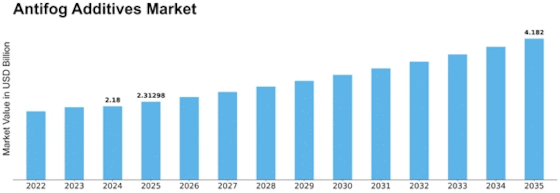

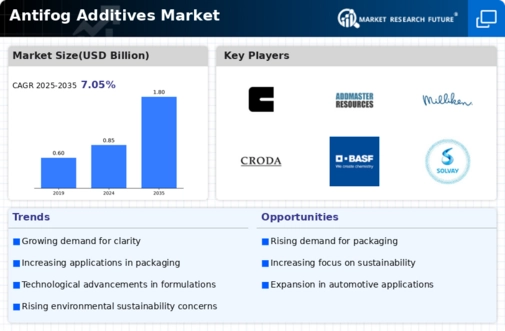
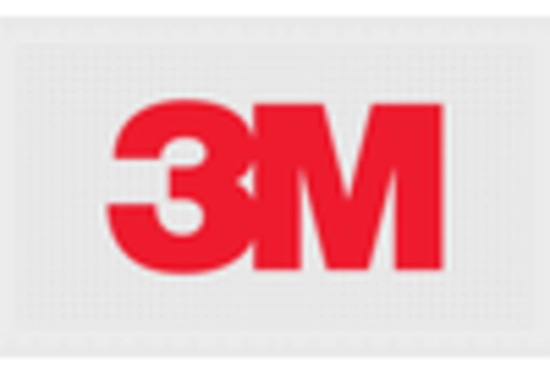

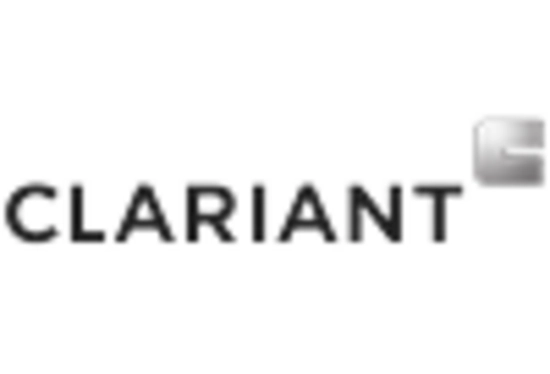
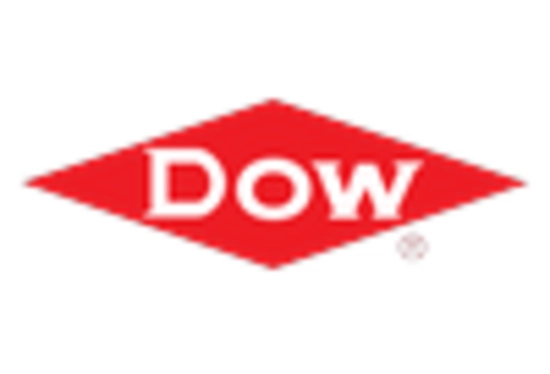
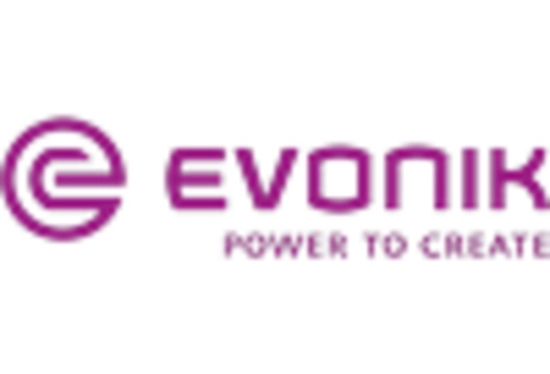
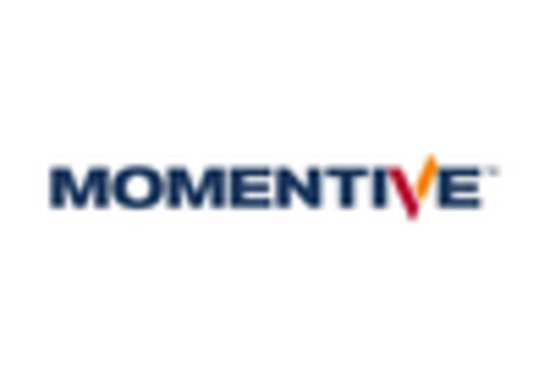

Leave a Comment